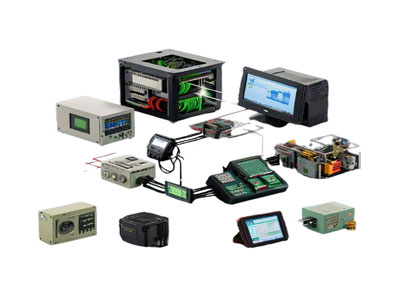Key Takeaway
IED (Intelligent Electronic Device) in SCADA (Supervisory Control and Data Acquisition) is a smart device used to monitor, control, and protect electrical systems. It integrates functions like data collection, processing, and communication, making it essential in modern automation. Examples of IEDs include protection relays, circuit breakers, and digital meters.
In a SCADA system, IEDs collect real-time data from the field and send it to the central system for analysis and decision-making. They can also execute commands from SCADA, such as opening or closing a breaker. IEDs enhance efficiency by combining multiple functions in a single device and enabling advanced communication protocols. In simple terms, IEDs are the “smart” components that link SCADA systems to field equipment, ensuring effective monitoring and control.
Understanding Intelligent Electronic Devices (IEDs)
IEDs are advanced microprocessor-based devices used in industrial automation for monitoring and controlling field equipment. Unlike traditional devices that serve limited purposes, IEDs combine multiple functions into a single unit, enhancing their efficiency and versatility.
For example, an IED used in a power grid might monitor voltage levels, detect faults, and issue commands to circuit breakers—all within the same device. These capabilities eliminate the need for multiple standalone devices, simplifying system architecture.
IEDs are commonly deployed in industries like power distribution, water treatment, and manufacturing, where precision and reliability are paramount. Their ability to process data locally and communicate with SCADA systems in real-time makes them indispensable in today’s automated environments.
In short, IEDs act as the intelligent field agents of SCADA systems, ensuring seamless data flow and control across complex industrial setups.

The Role of IEDs in SCADA Systems
IEDs play a pivotal role in SCADA systems, acting as the interface between field equipment and central monitoring units.
In a typical SCADA setup, IEDs are connected to sensors, actuators, or other field devices. They collect data from these devices, process it, and relay the information to the SCADA system. For example, in a water treatment plant, IEDs might monitor pump performance, water quality, and flow rates, sending real-time updates to the control center.
IEDs also enable remote control. Operators can use SCADA interfaces to send commands to IEDs, which then execute tasks like opening a valve or adjusting motor speed. This capability is essential for managing dispersed systems like power grids or oil pipelines.
Moreover, IEDs enhance system reliability by processing critical data locally. This means they can respond to events, such as fault detection, independently of the SCADA system, ensuring swift and effective action.
By integrating data collection, processing, and control, IEDs are the backbone of efficient SCADA systems.
You May Like to Read
Key Functions and Features of IEDs in Industrial Automation
IEDs bring a range of advanced functions and features to industrial automation, making them highly versatile and efficient.
1. Data Acquisition and Monitoring:
IEDs collect real-time data from field devices, such as temperature sensors, pressure gauges, or flow meters. This data is then processed and transmitted to the SCADA system for analysis and display.
2. Localized Control:
IEDs can execute control functions, such as regulating voltage, adjusting motor speed, or opening valves, based on pre-programmed logic. This reduces the reliance on centralized systems for routine tasks.
3. Fault Detection and Protection:
IEDs are equipped with algorithms to detect anomalies, such as overcurrent or under-voltage. Upon identifying a fault, they can isolate affected sections to prevent system-wide disruptions.
4. Event Logging:
IEDs store event data, such as alarms or operational logs, enabling operators to analyze performance and troubleshoot issues.
5. Protocol Compatibility:
Most IEDs support multiple communication protocols, ensuring seamless integration with SCADA systems and other industrial devices.
These features make IEDs a vital component in achieving efficient, reliable, and scalable industrial automation.
Communication Protocols Used by IEDs in SCADA
Effective communication is critical in SCADA systems, and IEDs support a range of protocols to ensure interoperability and reliability.
1. IEC 61850:
Widely used in power systems, this protocol enables seamless communication between IEDs and SCADA systems. It supports fast, reliable data exchange and advanced features like substation automation.
2. Modbus:
A popular protocol for industrial applications, Modbus allows IEDs to communicate with SCADA systems over serial or Ethernet networks. Its simplicity and flexibility make it a common choice.
3. DNP3 (Distributed Network Protocol):
Designed for utility networks, DNP3 is ideal for SCADA systems requiring secure, efficient communication. It supports real-time data transmission and event logging.
4. Ethernet/IP:
This protocol enables high-speed communication in industrial automation, ensuring real-time data transfer between IEDs and SCADA systems.
5. MQTT:
Common in IoT applications, MQTT facilitates lightweight, efficient communication, making it suitable for large-scale SCADA networks.
By supporting diverse protocols, IEDs ensure compatibility with various SCADA architectures, enhancing system flexibility and scalability.
Advantages of Using IEDs in SCADA Networks
The integration of IEDs in SCADA networks offers numerous benefits, transforming industrial automation:
1. Enhanced Efficiency:
IEDs streamline data acquisition, processing, and control, reducing system complexity and improving operational efficiency.
2. Real-Time Decision-Making:
With their ability to process data locally, IEDs enable immediate responses to events, minimizing delays and preventing system failures.
3. Improved Reliability:
IEDs are designed for continuous operation in harsh environments, ensuring reliable performance even under challenging conditions.
4. Cost Savings:
By combining multiple functions in a single device, IEDs reduce the need for separate hardware components, lowering installation and maintenance costs.
5. Scalability:
IEDs support seamless integration with SCADA systems, allowing industries to expand their automation capabilities without major system overhauls.
These advantages make IEDs indispensable for modern SCADA networks, ensuring robust, efficient, and reliable industrial operations.
Conclusion
IEDs (Intelligent Electronic Devices) are critical to the efficiency and reliability of SCADA systems. By combining data collection, real-time communication, and advanced control functions, IEDs bridge the gap between field equipment and central monitoring units. They support diverse communication protocols, enhance decision-making, and ensure scalability, making them a cornerstone of modern industrial automation.
For engineers and operators, understanding the role of IEDs is essential for designing and maintaining effective SCADA networks that meet the demands of today’s dynamic industries.
